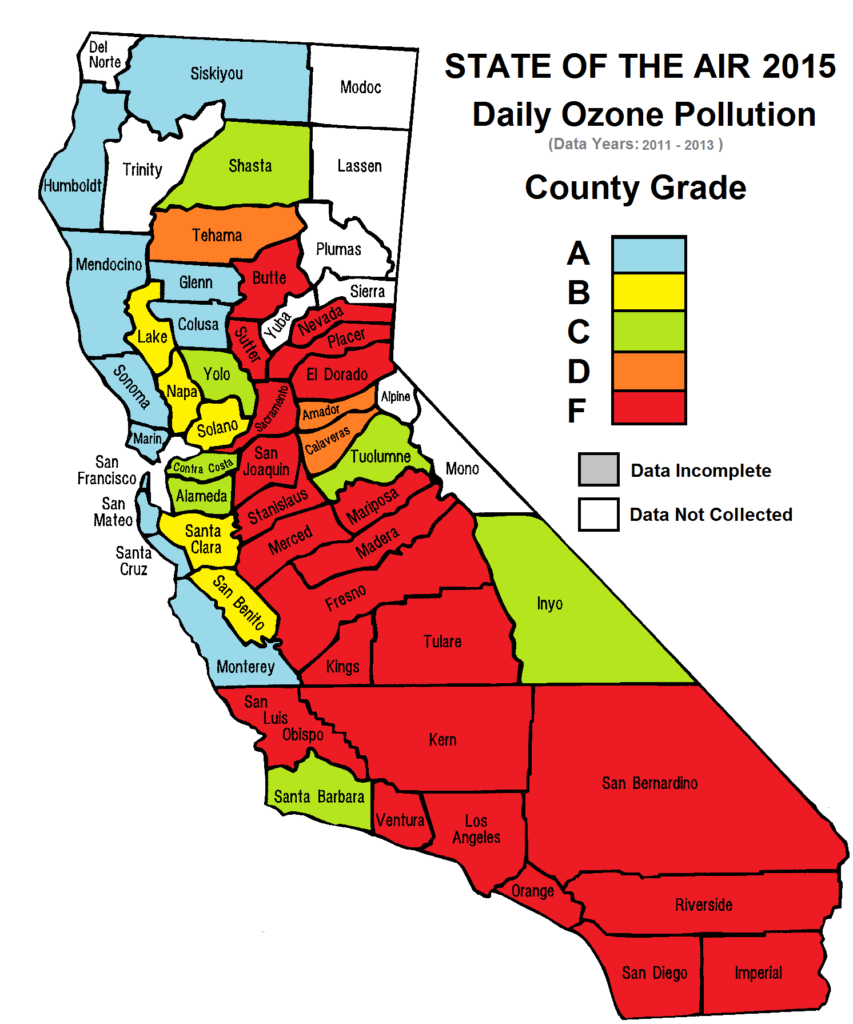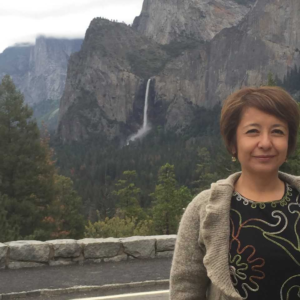
Afternoon in Merced with smog hovering the blue sky from forest fires. (April Navarrete)
There have been times where I walk outside and see smog taking over the clear, blue sky due to forest fires and vehicle emission. Living in Merced for almost four years now, I’ve experienced scorching hot summers, chilly winter seasons, and very dry air. It is hard to realize that air pollution is a serious issue because most of the time, we can’t see these particles visible in the air. These toxins are dangerous because they can lead to health issues like lung disease, birth development problems, cardiovascular disease, and more.
The reason why we live in an area with very high rates of air pollution is due to the geography of where we are on the map. Since we are surrounded by mountain ranges, we live in a “bowl-shaped valley” that collects the emissions from residents and their vehicles according to Valleyair.org. California alone has one of the worst smog problems compared to other States and being in the Central Valley means we are in the midst of it all.
CalEnviroScreen is a tool that helps map and spot California communities affected by pollution. They use indicators to measure levels of pollution in different areas. Merced is considered to be in the “red zone” meaning it has very high levels of air pollution (roughly 91-100 percent). Some pollutant particles are visible to the human eye known as ozone pollution, but others are very small and harmful called particulate matter pollution (PM), which consist of a mixture of airborne molecules and liquid droplets composed of acids . By being exposed to this pollution burden, it could also lead to more severe illnesses and respiratory problems, especially in kids.

Map showing how Merced has high rates of Daily Ozone Pollution. (Central Pan-Ethnic Health Network)
Because there is only one main hospital in the area that serves the communities of Merced, Atwater, Winton, and Livingston, it is difficult to treat major respiratory diseases since there are no specialized doctors (i.e. pulmonologists who specialize in respiratory tract diseases) to help treat these issues during emergencies. With the risk of chronic respiratory diseases like asthma on the rise, this can be a dilemma to the community since over 51,000 people in Merced and Mariposa Counties have asthma and more than 17,000 of them are children.
Michael Tien, a fourth year student studying at UC Merced has had asthma since he was a child. Since coming to Merced four years ago his asthma progressively worsened: “My asthma has been more periodic since I’ve been to Merced. Especially during the spring when it’s allergy season, I find myself having to use my inhaler more. Also, due to the fire season, the air quality has made breathing difficult at times.”
Because there is no known cure for asthma, this puts children’s lives at risk because the disease can potentially develop into more harmful health risks as they grow older.

Nayamin Martinez, Director of the Central California Environmental Justice Network (CCEJN). CCEJN is aimed towards ending environmental racism and achieving economic justice through sustainable regional solutions.
Nayamin Martinez, the director of the Central California Environmental Justice Network (CCEJN), gave some insight on PM in the air.
“PM is not only about respiratory conditions or asthma, it’s been proven that it’s so tiny that it goes into your bloodstream and it flows to other parts of the body and has been linked to an increase in cardiovascular disease, stroke, and other health problems,” Martinez said.
While this issue is one that can’t be completely resolved overnight, there are different organizations that are trying to improve air quality in the Central Valley, such as CCEJN, Central California Asthma Collaborative (CCAC), and Leadership Counsel for Justice & Accountability (LCJA), whose missions include improving air quality through education and providing direct services, especially with those in low income disadvantaged communities. These organizations are proactive on trying to find the best ways in improving air quality whether it be through different programming events or policy changes. Different programming events include weatherization programs and clean energy vehicle programs. Policy changes can be directed towards schools, industries, or transportation like the Assembly Bill No. 617. Abigail Ramirez from the LCJA is working on AB 617 which is dealing with installing more air monitors around the community. While there are organizations that are trying to do their part in improving air quality, there are also many different ways that community members can engage themselves in the process.
If individuals participate in this change it can help keep our world a cleaner, healthier place to live in. These organizations have opportunities for the community to get involved. Events held that community members can attend range from board hearings to clean energy engagement programs and more. Individuals can make changes in their behaviors both indoors and outdoors. This can range from using non-chemical household cleaning supplies, creating more tobacco free zones, and carpooling to help reduce fuel emission. (Improving Air Quality in Your Community, 2016) Aside from these changes in behavior, the community should be aware and do their own research on the organizations trying to resolve this issue. The more people who are aware and educated on air pollution, the better chances there are of this issue improving.
 Translate
Translate
